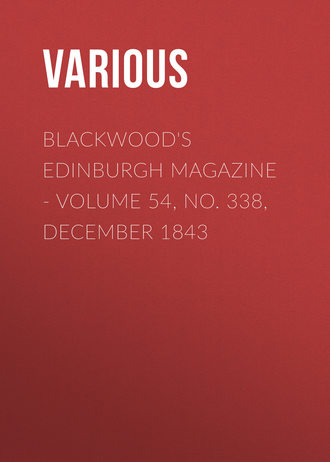Blackwood's Edinburgh Magazine - Volume 54, No. 338, December 1843
 полная версия
полная версияBlackwood's Edinburgh Magazine - Volume 54, No. 338, December 1843
Жанр: учебная и научная литературазарубежная старинная литературазарубежная образовательная литературазнания и навыки
Язык: Английский
Год издания: 2019
Добавлена:
Настройки чтения
Размер шрифта
Высота строк
Поля









